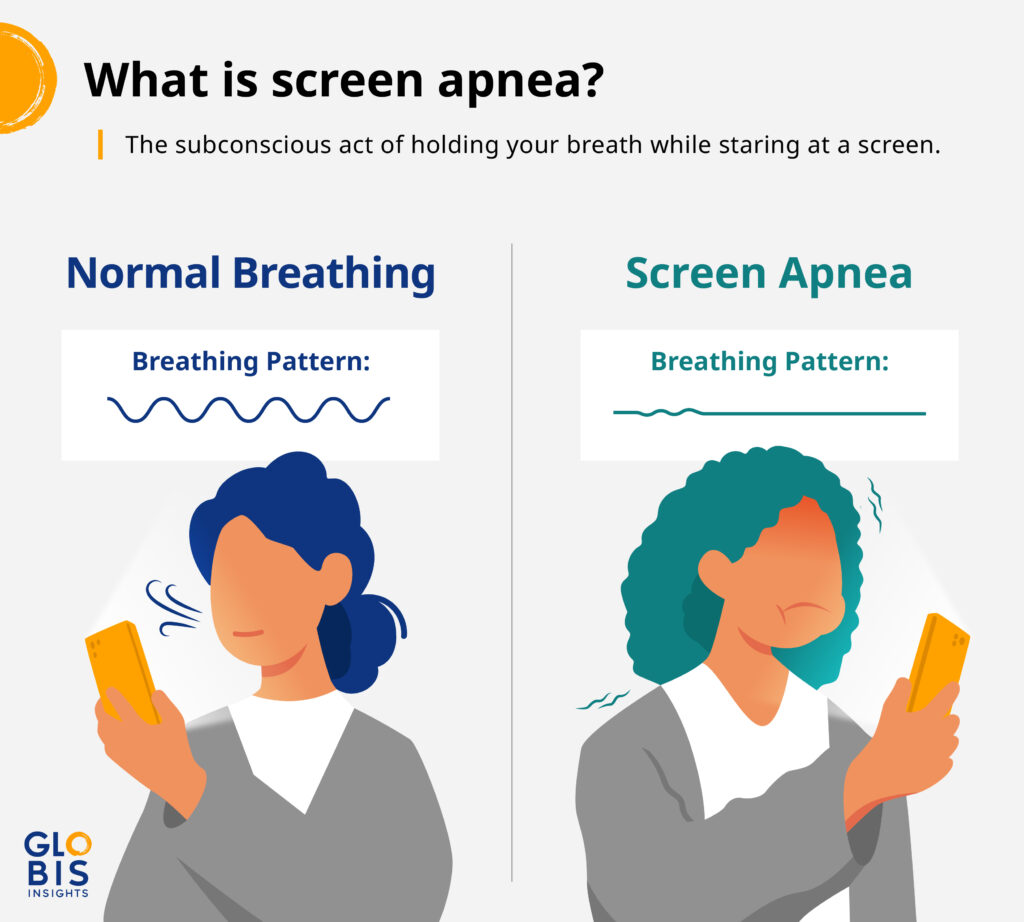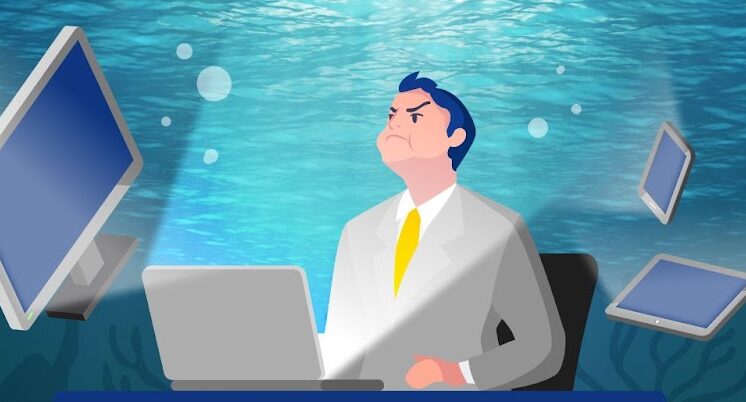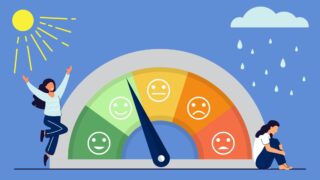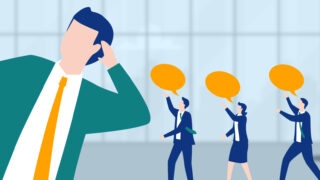Leading High Performing Remote Teams
How can leaders ensure that performance remains high in remote or hybrid-work environments?
Social Media & Digital Communications: Impact on Global Public Opinion
Social and digital media have dominated the communications industry for decades. But it's no secret that social media has the power to sway public opinion, and the way in which many companies use these platforms could be seen as manipulative.
What do companies need to be aware of when utilizing social and digital media? How can these mediums be used to better communicate strategically with the world?
Discover what top media and communications experts have to say.
Are you breathing right now? No seriously, are you actually inhaling and exhaling?
If you weren’t, you aren’t alone. According to Forbes and The New York Times, it’s possible that up to 80% of people will experience screen apnea, or the involuntary holding of their breath while looking at screens, at some point in their lives.
It’s an odd statistic that may strike you as irrelevant until you remember (or admit) the fact that the average American spends about seven hours in front of a screen each day.
It turns out the human body wasn’t designed to be parked at a desk all day, and, unsurprisingly, doing so may cause (or exacerbate) a myriad of physical and mental health issues.
Leading High Performing Remote Teams
How can leaders ensure that performance remains high in remote or hybrid-work environments?
What is screen apnea?
Screen apnea is a manifestation of the fight-or-flight response that can cause you to hold your breath while looking at screens–like the one you’re reading this article on right now.
Brought to wider attention by columnist Linda Stone in a widely circulated piece for the Huffington Post back in 2008, Stone says that she noticed her tendency to lull into shallow breathing (and a lower heart rate) while checking her email.
You may not feel like running for your life right now, but you would probably relate to what James Nestor has to say about your use of smartphones in his 2020 book Breath: The New Science of a Lost Art.
“You have 10 different screens open. Someone’s texting you, someone’s calling you, someone’s emailing you,” he said, adding that we have not evolved to be “constantly stimulated.”
So we respond in the way that we’re instinctively compelled. Like a lioness spotting her prey, when you respond to your boss’s email that just popped up, your breathing likely slows down. You focus on the stimuli, and you formulate a plan of attack.

After becoming more aware of her habit, Stone realized that she was experiencing completely different breathing patterns when working on the computer compared to the rest of her day.
Alarmed and intrigued, Stone then spent the next seven months conducting her own experiments on willing volunteers and consulting with various researchers and psychologists. Her hard work would ultimately culminate in the coining of the term email apnea. The term was later changed to the more inclusive screen apnea.
During her research, Stone found that 80% of her total participants experienced screen apnea. When she investigated what set the other 20% apart, she discovered that those who didn’t experience screen apnea had learned some sort of breathing techniques from their work or hobby.
These were people like dancers, pilots, and musicians who understood that holding their breath for long periods can have disastrous effects on their health and performance.
What are the effects of screen apnea?
Newsflash: Breathing is good for you. But that’s not all there is to it.
The bigger issue is that most people who experience screen apnea don’t actually realize it until it’s too late. And that’s not anything to snore at, either.
The effects of prolonged sessions of sedentary behavior (like sitting in front of a Macbook fiddling with spreadsheets for 40 hours a week) have on your cardiovascular health have been compared by some experts to that of smoking.
A lack of oxygen can play tricks on your brain, causing you to feel anxious, too. Withholding breath will force the nervous system into a fight-or-flight mode that can trigger anxiety and other nasty side effects.
If you feel like attending remote obligations is almost more exhausting than showing up in person, you could be experiencing what’s known as Zoom fatigue, a stress-induced state of being that became widespread during the COVID-19 pandemic. When everyone was forced to attend everything from corporate meetings, to graduation ceremonies and even funerals online, we were forced to spend a lot more time staring at screens, too.
Social Media & Digital Communications: Impact on Global Public Opinion
Social and digital media have dominated the communications industry for decades. But it's no secret that social media has the power to sway public opinion, and the way in which many companies use these platforms could be seen as manipulative.
What do companies need to be aware of when utilizing social and digital media? How can these mediums be used to better communicate strategically with the world?
Discover what top media and communications experts have to say.
More staring at screens leads to a more stressed-out state of mind, which leads to more anxiety, less effective work days, and if left untreated, a whole host of other issues. The good news is you can turn this ship around with a few preventative measures.
Next Article
How to Conquer Allostatic Overload and Make Clear Career Decisions
5 Ways to Improve Your Active Listening Skills
How can you prevent screen apnea?
The TL;DR is that you should start paying attention to your breathing patterns throughout the day.
- Do breathing exercises
- Move around
- Take screen breaks
But just like discovering you’re suffering from screen apnea in the first place, taking steps to prevent it can be a little complicated.
The most effective solution is to get up and get active from time to time.
The Pomodoro technique is a handy tool to help pace yourself while you work. Every 15 to 30 minutes or so, get up and stretch. If you can, try to get out for a longer walk during lunch.
While you’re walking, practice some basic breathing exercises, and use these techniques to help you focus on taking deep breaths throughout the rest of your workday.
If you aren’t able (or willing) to get in and out of your seat throughout the work day, a little chair yoga could be just the thing you need to make the most of your Pomodoro break.
Just breathe.
If you suffer from screen apnea, it’s important to consider when it happens, what’s causing it, and do what you can do to correct it (and hopefully prevent it from happening again in the future). Practicing mindful breathing throughout the day will help you stay focused, get your work done faster, and help you feel better while you do it, too.





